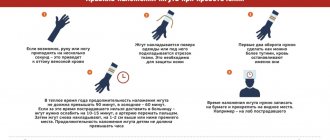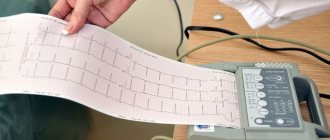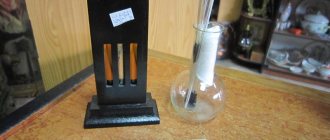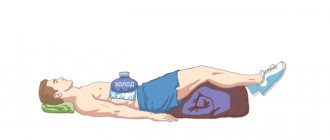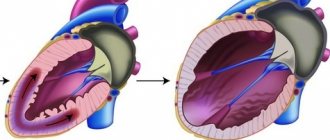Equations [edit | edit code]
Let a be the radii of the circles, the origin of coordinates is at the rightmost point of the horizontal diameter of the fixed circle (see figure). Then the cardioid equations can be written in the following forms [2]:
- In rectangular coordinates[1]: ( x 2 + y 2 + 2 ax ) 2 − 4 a 2 ( x 2 + y 2 ) = 0 +y^2>+2ax)^2>-4a^2>(x^ 2>+y^2>),=,0>2>
- In rectangular coordinates (parametric notation): x = 2 a cos t − a cos 2 ty = 2 a sin t − a sin 2 t
- In polar coordinates[2][1]: r = 2 a ( 1 − cos φ )
Hierarchy of internal biological clocks
So, how does our internal clock work? Recent studies indicate that the internal pacemakers in our body are organized according to the laws of hierarchy: there are the most important clocks and subordinate clocks. The main center of the circadian clock is the suprachiasmatic nucleus in the brain, a dense cluster of about 20 thousand neurons, and it is located just next to the center that regulates the production of hormones in the body. As for the subordinate clocks, as analysis of gene expression in the cells of internal organs has shown, genes responsible for circadian rhythms are expressed in every cell of the body, including even connective tissue. This led scientists to believe that each organ has its own internal clock. The internal clock system of the internal organs was called the peripheral clock, and the suprachiasmatic nucleus that controls them was called the central clock (Fig. 1). The liver, blood vessels, heart, and kidneys have their own chronometer. But for the body to function effectively, it is extremely important that all clock mechanisms are tuned to work harmoniously in the same rhythm - synchronized.
Figure 1. Hierarchy of the internal biological clock: the main center of the circadian clock is the suprachiasmatic nucleus in the brain, which sets the rhythm of all cells of the body through the autonomic nervous system, specialized hormones and various factors. Subordinate clocks in the cells of internal organs are called peripheral.
The phases of internal chronometers can shift under the influence of certain stimuli that can impose their own rhythm. Such stimuli are called zeitgebers (from German Zeit - “time” and geben - “give”) or pacemakers. Each watch is capable of responding to its own specific pacemakers. For example, light sets the rhythm of the central clock in the suprachiasmatic nucleus, while it does not directly affect the peripheral clock. Zeitgebers can be not only external influences, but also behavioral patterns: physical activity regimen, sleep-wake cycle, and even diet. For example, it has been clearly shown that the internal clock of the liver is more tuned to the rhythm of food intake than to the rhythms of the light and dark periods of the day [4].
The main physiological synchronizer of all peripheral clocks is the suprachiasmatic nucleus. Thanks to their connections with the light-sensitive cells of the retina, the neurons of the suprachiasmatic nucleus are able to receive information about the photoperiod from the outside and adjust the internal rhythms of the body to external conditions. Synchronization of peripheral clock systems is carried out through the autonomic nervous system by special hormones and, possibly, other, as yet poorly understood, pathways. Every year, scientists discover and describe in detail more and more new factors that influence the regulation of internal rhythms [5].
Properties [edit | edit code ]
- Cardioid is a special case of Pascal's cochlea
- A cardioid is a special case of a sinusoidal spiral
- Cardioid is an algebraic curve of the fourth order.
- The cardioid has one cusp.
- The arc length of one turn of the cardioid, given by the formula in polar coordinates
r = 2 a ( 1 − cos φ ) is equal to: L = 2 ∫ 0 π r ( φ ) 2 + ( r ′ ( φ ) ) 2 d φ = ⋯ = 8 a ∫ 0 π 1 2 ( 1 − cos φ ) d φ = 8 a ∫ 0 π sin ( φ 2 ) d φ = 16 a ^+(r'(varphi ))^2>>>;dvarphi =cdots =8aint _2>0>^>(1- cos varphi )>>;dvarphi =8aint _2>1>0>^sin(>)dvarphi =16a>
- Area of a figure bounded by a cardioid given by the formula in polar coordinates
r = 2 a ( 1 − cos φ ) is equal to: S = 2 ⋅ 1 2 ∫ 0 π ( r ( φ ) ) 2 d φ = ∫ 0 π 4 a 2 ( 1 − cos φ ) 2 d φ = ⋯ = 4 a 2 ⋅ 3 2 π = 6 π a 2 1>2>>int _2>0>^>;dvarphi =int _2>0>^(1-cos varphi )^2>>;dvarphi =cdots =4a ^2>cdot 3>2>>pi =6pi a^2>>.
Radius of curvature of any line:
ρ ( φ ) = [ r ( φ ) 2 + r ˙ ( φ ) 2 ] 3 / 2 r ( φ ) 2 + 2 r ˙ ( φ ) 2 − r ( φ ) r ¨ ( φ ) .
2>+>(varphi )^2> ight]^>+2>(varphi )^2>-r(varphi )>(varphi )>> .>
What gives for a cardioid given by an equation in polar coordinates:
r ( φ ) = 2 a ( 1 − cos φ ) = 4 a sin 2 φ 2 ,
2>2>>,> ρ ( φ ) = ⋯ = [ 16 a 2 sin 2 φ 2 ] 3 2 24 a 2 sin 2 φ 2 = 8 3 a sin φ 2 . sin ^2>2>>]^3>2>>>sin ^2>2>>>>=>asin 3>8>2>> .>
Daily variability of cardiovascular parameters
Another very important point is that during the day the heart’s sensitivity to stress, emotional and physical stress varies. The indicators of cardiovascular function themselves also change over time: blood pressure, blood flow speed, heart rate and others. Continuous recording of an electrocardiogram for 24 hours in people at rest shows that a person's heart rate is constantly varying: it reaches a minimum in the fifth or sixth hour of sleep and at this time is 48–50 beats per minute. It reaches its maximum in the evening, at about 6 p.m., and then gradually begins to decrease again.
All these phenomena are possible due to the complex molecular mechanisms of the cardiovascular system's own peripheral clock. About 10% of genes expressed in cardiac cells have a daily rhythm of expression. Currently, an active search is being carried out for factors affecting the functioning of the heart and having circadian rhythm. Molecular clocks have already been found in the muscle cells of the heart, in the cells of the inner lining of blood vessels (in the endothelium) and in the muscle cells of blood vessels.
History [edit | edit code]
The cardioid was first encountered in the works of the French scientist Louis Carrè
, 1705).
The name of the curve was given in 1741 by Giovanni Salvemini di Castillone (he is also referred to as Johann Francesco Melchiore Salvemini Castillon
).
"Straightening", that is, the calculation of the length of the curve, was performed by La Hire ( Philippe de La Hire
), who discovered the curve independently, in 1708.
Koersma
(1741) also independently described the cardioid Subsequently, many prominent mathematicians of the 18th–19th centuries showed interest in the curve.
One and one makes two. Everyone is lonely - here you are, and there I am. People are always doubly lonely when they are alone with themselves. If something could bring them together, the two would immediately become one. Let mathematics combine our hearts to take us all the way to the end.
Williams Jay, "Heroes of Nowhere"
The post probably should have been titled "How to Draw an Animated Valentine's Day Heart Using Math in an Inappropriate Way." I rejected this name in favor of a more poetic one: after all, a wonderful romantic holiday is approaching, which we, IT specialists and other nerds, must meet fully armed. I will immediately show you the result, and under the hack there will be a lot of letters about how I achieved this result.
Disclaimer
I realize that a beautiful blinking heart can be made without the slightest knowledge of mathematics. But is this interesting?
Step 1. Parameterize the heart.
First, we need a mathematical object that at least vaguely resembles a heart. Fortunately, for me this step was trivial: a couple of years ago I discovered a wonderful formula for just such a case (for aesthetic reasons, the graph in the figure is stretched horizontally, in fact it should fit between -1 and 1).
The formula was discovered from the following considerations: take an ordinary circle and imagine that it consists of jelly, while being rigidly attached to the ordinate axis. Now let’s “blow” on it from below: add to the Y coordinate a certain function w(x) = w(x(t)), equal to zero at x=0, monotonically increasing at x>0 and even in x. After such a “blow,” the halves of the circle will move upward, forming “bulges” of the heart, and thanks to the rigid attachment to the Y axis, a lower “tail” and an upper “dent” are formed. In this case w(x(t)) = |x| 1/2 = |cos(t)| 1/2. You can try another “blowing function” yourself and see what happens.
Step 2. From parametric specification to implicit function.
x = cos(t) y = sin(t) + |cos(t)| 1/2 y - |x| 1/2 = sin(t) (y - |x| 1/2 ) 2 + x 2 = 1 f(x,y) = (y - |x| 1/2 ) 2 + x 2 - 1 = 0
Step 3. From an implicit function to a function of two variables. Function of color.
With f(x,y) in hand, we can finally realize our dream: to draw a beautiful color picture. To do this, we need one more function: the color function. It should take a real argument r and return an integer value between 0 and 255. It is also desirable that it be monotonic on each semi-axis and have a maximum at zero. As such a function, you can take, for example, this one:
Here 100 is the “magic number”; later, in full accordance with “good programming style,” we will replace it with a parameter. Now for each point (x,y) we can set the color as rgb(c(f(x,y)), 0, 0). Those points that previously belonged directly to the “heart” graph have become bright red (note the stationary light outline in the GIF). As you move away from the graph, the color will fade until it becomes black at some distance from it.
Step 4. Add a parameter and create an animation.
Now let's replace the magic number 100 with the parameter k. The new color function looks like this:
Let k be some function of time. Then for each point in the image at each moment in time we can calculate its color (which is, in fact, the mathematical definition of animation). At first I wanted to take something like k(t) = 80(sin(t)+1). Then, however, I realized that with a large number of frames, the GIF would weigh more than 640 kilobytes. On the other hand, with a small number of frames there is no point in bothering with the analytical task k(t). In the end, to get the heart pulsating, I sequentially assigned k values of 80, 90, 100, 110, 120, 110, 100, 90, and then combined the images generated for these values into a looping GIF. In general, that's all.
Concept of function
A function is the dependence of y on x , where x is the variable or argument of the function and y is the dependent variable or value of the function.
To define a function means to define a rule according to which the corresponding values of the independent variable can be found. Here are the ways you can set it:
- Tabular method - helps to quickly determine specific values without additional measurements or calculations.
- Graphic method - visually.
- The analytical method is through formulas. It is compact, and you can calculate the function for an arbitrary value of the argument from the domain of definition.
- Verbal method.
The domain of definition is the set x, that is, the range of permissible values of the expression that is written in the formula.
For example, for a view function, the domain of definition looks like this
- x ≠ 0, because you cannot divide by zero. You can write it like this: D (y): x ≠ 0.
The range of values is the set y , that is, these are the values that the function can take.
For example, the natural range of the function y = x² is all numbers greater than or equal to zero. You can write it like this: E (y): y ≥ 0.
Peripheral clocks in vascular muscle cells
The smooth muscle cells of blood vessels - myocytes - also have their own peripheral clock. Takishige Kunieda studied the circadian system in aging vascular myocytes. He found that in these cells, the loss of circadian rhythmicity is associated with telomere shortening. The introduction of telomerase prevented problems with the expression of clock genes. These studies suggest that telomerase regulation may be one of the therapeutic options for age-related circadian rhythm disorders [11].
Synchronization of the molecular clock of cardiac muscle cells with lipid metabolism
We have already talked about how important it is to synchronize heart rhythms with the cycles of other physiological systems of the body. It is equally important to note that some internal cycles are capable of imposing their rhythm on the heart clock. One of these master cycles is the daily rhythm of the circulation of fatty acids and lipid levels, which is tightly linked to the circadian one. Fatty acids are the primary “heart fuel”: 70% of them are utilized by the heart. With an excess of fatty acids, the contractile function of the heart is suppressed, and the heart responds to these changes in the internal environment by activating both oxidative (mitochondrial) and non-oxidative metabolism. In this way, the heart reduces cellular toxicity caused by fatty acid loading. And this process is also associated with the daily rhythms of gene expression.
American researcher Molly Bray studied circadian clock genes using DNA microarray technology. She was able to identify 548 genes that regulate the clock in atrial cardiomyocytes and 176 genes associated with the circadian rhythm of ventricular muscle cells. These included genes involved in lipogenesis and lipid binding proteins; all of them showed diurnal expression [8].
Peripheral clock in endothelial cells
Several groups of scientists have demonstrated the role of clock genes in the function of the endothelium, the tissue lining the inside of blood vessels and the heart. They found that in mice with a mutation in the Per 2 clock gene, blood vessels do not relax in response to the influence of the main relaxing neurotransmitter, acetylcholine. In addition to this very unpleasant dysfunction, a very high concentration of substances that stimulate vascular compression is detected in the blood of mice, which is fraught with the occurrence of arterial hypertension [9].
But the health problems for the unfortunate mice did not end there. Researcher Chao Wang showed that if endothelial cells have a mutation of the Per 2 gene, then blood vessels quickly age, are poorly restored after damage, and the life expectancy of rodents themselves is greatly reduced [10].
